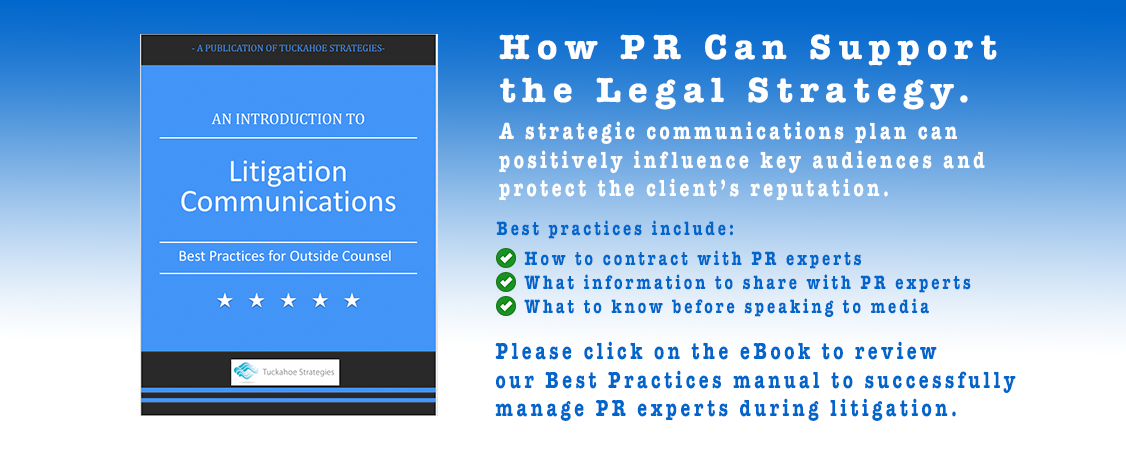Often times when faced with a crisis, the most important decisions are made within the first 24 hours, and sometimes within the first sixty minutes. If your company doesn’t have a crisis communications plan in place, it needs one.
 Corporate crisis communications plans don’t necessarily have to detail every single possible crisis situation on the planet, but they do need to include a “one size fits all” process for how crises should be managed.
Corporate crisis communications plans don’t necessarily have to detail every single possible crisis situation on the planet, but they do need to include a “one size fits all” process for how crises should be managed.
At a minimum every company and organization should have in place a crisis team (to include senior executives), a method for the team to communicate in the event of a crisis, and basic steps for how to address a number of likely scenarios. Click here to download Tuckahoe Strategies’ .
Tuckahoe Strategies has developed a branded acronym to help clients manage crisis situations called FACTS that spells out which steps should be taken the first hours of a crisis:
- Find out what happened from sources closest to situation. Accurate information is essential when it comes to crisis management. Bad information tends to move quickly between many sources in crises, so it is important that the facts are established by credible sources even if it means taking a little more time in the heat of the situation.
- Assess the damage/fallout. It is important to be able to make a determination about what has happened, what it means, and to whom. Is it a two-day problem or a two-year problem? How does it affect your corporate reputation? Your customers? The crisis manager needs to be able to understand the severity of the situation in order to effectively update the crisis team while someone on the team is monitoring press reports and social media chatter.
- Consider available options. At this stage the crisis team should be assembled (as per the corporate crisis plan) and updated with current information about what happened and who is affected. While it is important for this team to take quick and meaningful action, it is just important that the team does not overreact either.
- Take action where appropriate. Crisis teams must include senior executives with decision-making power. What action the company takes (or doesn’t take) will set the tone for the remainder of the situation. It’s not necessary to attempt to resolve the entirety of the crisis at this stage, but swift, reasonable action will put the company in control and in the driver’s seat.
- Speak as the authoritative voice to key audiences. Say something! Sometimes, just letting your key audiences know that you are aware of the situation and on the job is enough as a first step. Silence is a killer. If you are not controlling the message then surely someone else will – often with wrong information.
These basic steps will help you prepare your company for how to manage a crisis. Is your company ready for a crisis?

=======
A crisis is anything that threatens your business and can result in financial loss, tarnished reputation, or legal/regulatory action. For a free Crisis Assessment or more information contact Ramsey Poston at RPoston@TuckahoeStrategies.com or by phone at 202.656.1698.





